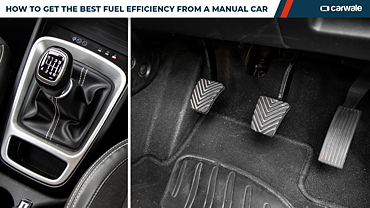
The Ertiga set a new benchmark for the seven-seater MUV back in 2012. The entry-level MUV costs less than a C-Segment sedan, offers two extra seats, higher driving position and more boot space with the third row down.
Its success brought in competition in the form of the Honda Mobilio and Chevrolet Enjoy and will soon faceoff with the Hyundai’s Grand i10-based seven-seater MPV. But before that happens, Maruti is moving in to cement its position with comprehensive updates that include a facelift, additional features and SHVS technology. We compare the new Ertiga with the competition, to figure if Maruti Suzuki has an easy task on hands.

The facelift for the Maruti Ertiga is restricted to minor tweaks at the front and rear, making it look slightly more premium than before. The front grille, bumper and fog lamp housing has been refreshed and there is lot more chrome here to make the car look nicer. The story at the rear is similar, with an added chrome strip and an extra pair of reflectors. The Ertiga was always a pleasant looking car, it is not too big to be classified as a fleet market vehicle. These looks of a ‘family car’ works in its favour.

The Mobilio is part of the budget car lineup from Honda. Based on the Brio-platform, the car shares lot more than just the internal components with the Brio and Amaze. Honda MUV looks unconventional with the cute rounded front and large proportions. Personally I am not a big fan of the way, Mobilio looks, but the saving grace is the ‘big H’ logo at the front, which makes it premium than its competition.

The Chevrolet Enjoy is a typical large MUV, made affordable with its Chinese lineage. The car is as boxy as any MPV, which not only maximises the space but also helps in keeping the costs in check. Looks is certainly not the USP of the Enjoy, but it offers better road presence with its size.

With the facelift, Maruti will be adding few more features to the entry-level MPV. The car will get touch-screen music system with Bluetooth, engine start button, rear parking camera and retractable mirrors. The drawbacks include the fact that this is a smallish MPV and the third row cannot accommodate adults for anything more than a short ride, but has a large boot once the third row is folded.

The Mobilio is slightly larger than the Ertiga, but with a lot smarter design offers much more space. The top-end variant also gets numerous features including navigation, projector headlamps and rear parking camera.

The larger dimensions of the Enjoy have translated into added space across the cabin. Also this MPV is taller with convenient ingress and egress and offers captain seats for the second row. The only problem is the fact that fitting this big a vehicle in the budget segment has taken a toll on the features list. It gets a basic music system, while there are no parking sensors or any other comfort features.
In terms of space and features, the Mobilio has the best balance of the three. It has decent features and also acceptable space, though the fit and finish quality could have been better.

The Ertiga facelift will use the same powertrains as before, but will offer automatic transmission with the petrol engine, while the diesel will get SHVS hybrid technology to improve efficiency. The 1.4-litre K-series engine delivers 94bhp and 130Nm of torque, the 1.3-litre diesel on the other hand is tuned to produce 90bhp and 200Nm. The four-speed automatic will be available in the VXi trim of the Ertiga, while all the diesel variants will get SHVS technology that should improve the fuel efficiency by 10 per cent.

The Mobilio is available with a choice of 1.5-litre petrol and diesel engines. The i-VTEC petrol is one of the most refined and powerful engines in the segment producing 118bhp and 145NM. The i-DTEC diesel also has more than decent power ratings of 99bhp and 200Nm, the flipside is the rather tardy refinement. Both the engines come mated to the five-speed manual transmission.

The petrol engine of the Enjoy is a 1.4-litre mill delivering 102bhp and 131Nm of torque and looks sufficient for the size of the car. The diesel on the other hand is the fixed geometry turbo version of the 1.3-litre multijet producing 76bhp and 188Nm; it makes the car feel underpowered considering the size. This also gets a five-speed manual and but the power is sent to the rear wheels like in the traditional MUVs.
Both the petrol and diesel engines of the Mobilio are more powerful than the competition, even in terms of efficiency they perform on par with competition, if not better.

In terms of overall package, the Honda Mobilio seems to be the best bet with a decent cabin space, ample features and strong powertrains. However, the car loses its edge once we take the pricing into consideration. The top-spec Honda costs Rs 2 lakh more than the similarly speced Ertiga.
The Maruti MPV then makes lot more sense, it may be a five-seater with a larger boot and space for two more in case of emergency, but with competitive pricing, affordable service and Maruti’s resale value, the Ertiga facelift looks like the apt choice in the segment.





